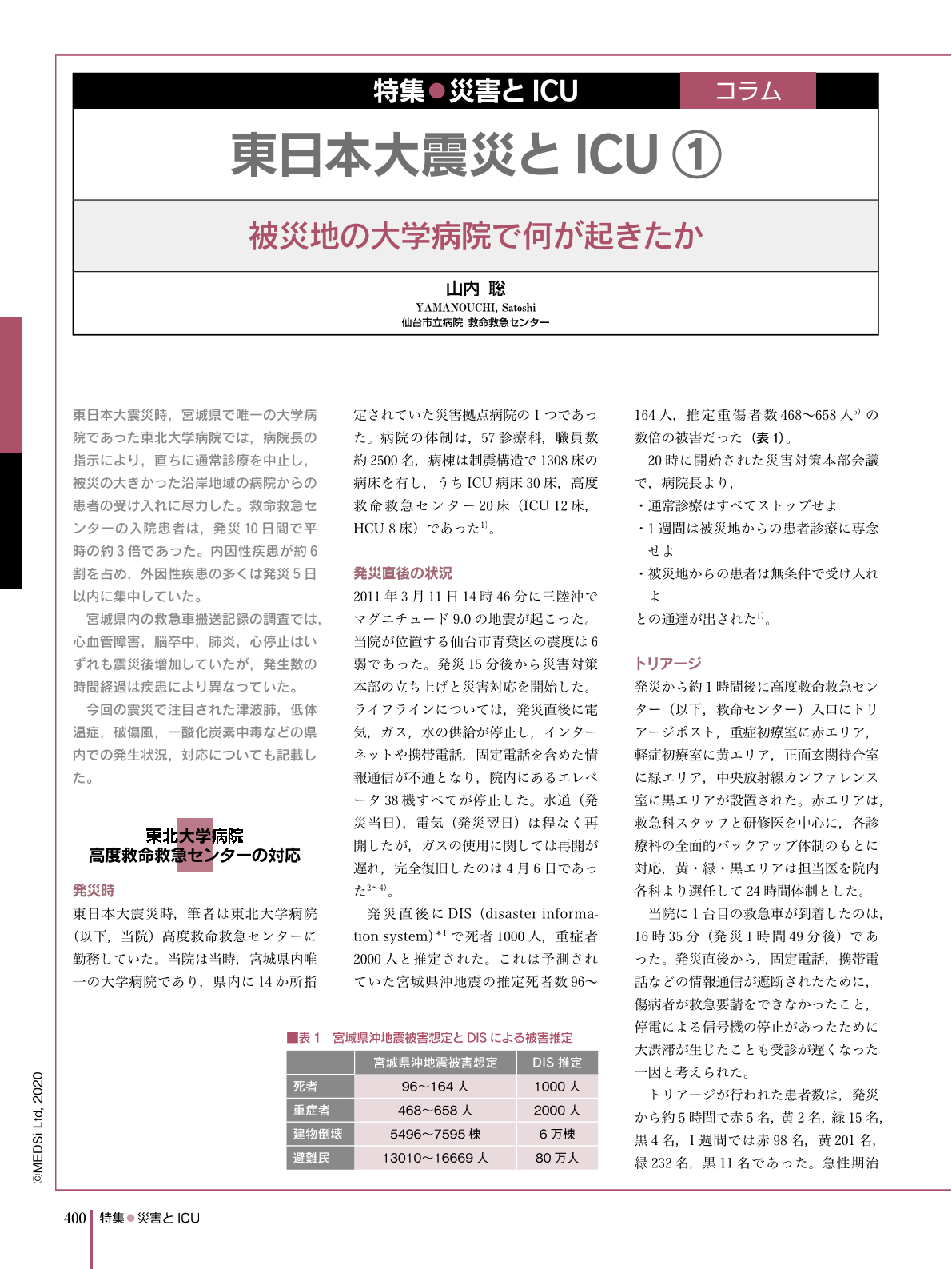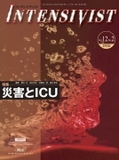Japanese
English
- 有料閲覧
- Abstract 文献概要
- 1ページ目 Look Inside
- 参考文献 Reference
東日本大震災時,宮城県で唯一の大学病院であった東北大学病院では,病院長の指示により,直ちに通常診療を中止し,被災の大きかった沿岸地域の病院からの患者の受け入れに尽力した。救命救急センターの入院患者は,発災10日間で平時の約3倍であった。内因性疾患が約6割を占め,外因性疾患の多くは発災5日以内に集中していた。
宮城県内の救急車搬送記録の調査では,心血管障害,脳卒中,肺炎,心停止はいずれも震災後増加していたが,発生数の時間経過は疾患により異なっていた。
今回の震災で注目された津波肺,低体温症,破傷風,一酸化炭素中毒などの県内での発生状況,対応についても記載した。
At the time of the Great East Japan Earthquake, Tohoku University Hospital, which was the only university hospital in Miyagi Prefecture, immediately discontinued routine treatment. Under the direction of the hospital director, staff worked hard to accept the transport of patients from hospitals in coastal areas where the damage and casualties were severe. The number of inpatients in the Emergency Center was about three times the usual number at 10 days after the disaster. Intrinsic diseases accounted for about 60%, and most of the patients with extrinsic diseases were cared for within five days of the disaster. By reviewing ambulance records in Miyagi Prefecture, it was found that the number of patients with acute coronary syndrome, stroke, pneumonia, and cardiopulmonary arrest had increased after the earthquake, and the time course of occurrence of diseases was clearly different. The occurrence and response to diseases such as Tsunami lung, hypothermia, tetanus, carbon monoxide poisoning, all of which were seen in this disaster, are described.

Copyright © 2020, MEDICAL SCIENCES INTERNATIONAL, LTD. All rights reserved.


